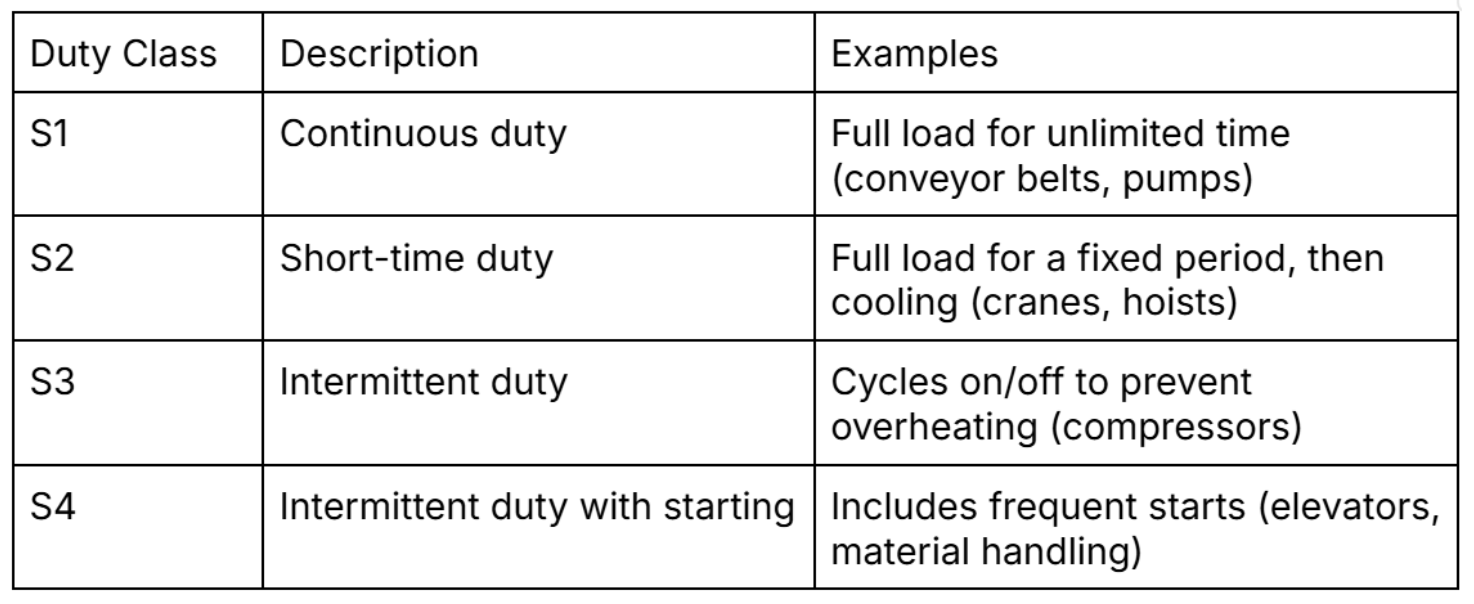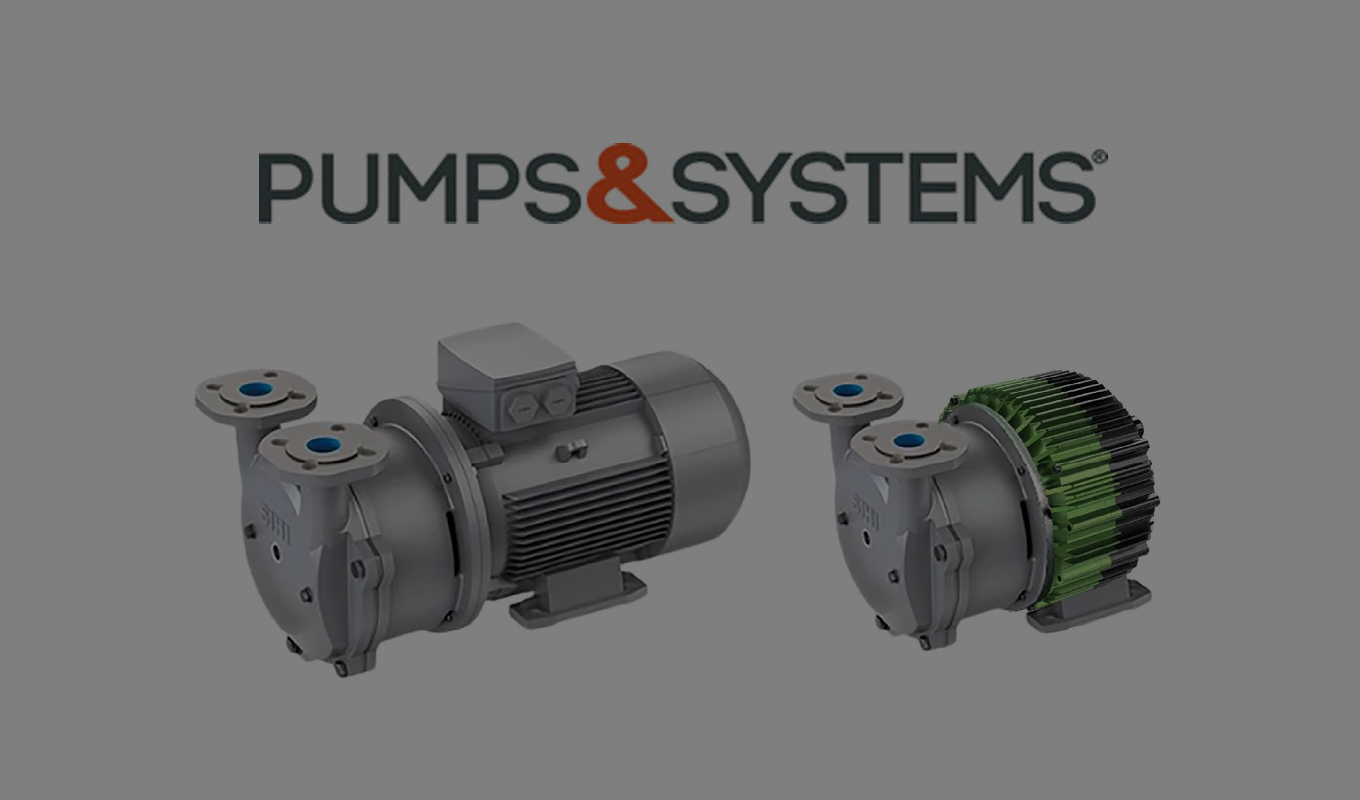
Motor Calculations Made Simple
Proper motor sizing and calculations based on load class, duty cycles, and power requirements can significantly reduce operating costs and downtime while improving system lifespan.
This guide simplifies essential calculations and classification principles to help technical professionals make better motor selection decisions.
Understanding Motor Duty Classes
Motor duty classes describe how often and how long a motor operates under load, which impacts sizing and maintenance.

These classifications allow for more accurate calculations of heat buildup, load handling, and motor lifespan.
Optimizing motor performance and efficiency is critical when selecting and specifying electric motors for reliable, energy-efficient drive systems.
- Shahzeb Mirza, Product Engineer, Conifer
Power Requirements (Horsepower or kW)
Power relates to the load and operational demands, consider actual load and start-stop cycles. For example:
Calculate the power needed:
Power = Load x Friction factor
- Example: For a conveyor load of 1,100 lbs with friction factor 0.1:
1,100 X 0.1 - 110 pounds
This formula helps identify the operational load to size the motor appropriately.
Torque and Speed
Torque represents the twisting force produced by the motor shaft, while speed defines how fast the motor shaft rotates (usually in revolutions per minute, RPM). Accurate torque and speed calculations ensure the motor delivers sufficient force to drive the load effectively without being oversized.
Calculate Torque (T) in pound-feet (lb-ft): T = (5252 X HP) / RPM
Where:
- HP = Motor horsepower
- RPM = Motor speed in revolutions per minute
Calculate Torque (T) in Newton-meters (N·m): T = (9550 X P) / N
Where:
- P = Power in kilowatts (kW)
- N = Speed in revolutions per minute (RPM)
Calculate Power (HP) from torque and speed: HP = (T X RPM) / 5252
Practical Use: Torque and Speed
- Higher torque may be needed at startup or when driving heavy loads.
- Torque and speed together determine the mechanical power transmitted.
- Variable Frequency Drives (VFDs) allow adjustment of speed to optimize torque based on load requirements.
Understanding and applying these formulas will help specify motors that meet load demands efficiently without unnecessary oversizing or energy waste.
Environmental and Efficiency Considerations
Environmental Ratings
Motors must be selected based on the environment they will operate in. Ratings often include exposure to dust, moisture, corrosive elements, or extreme temperatures.
Choosing motors with appropriate protection ensures longer service life and reliability.
- Common ratings include IP (Ingress Protection) codes that specify resistance to solids and liquids.
- Motors rated for harsh environments help prevent breakdowns and reduce maintenance needs.
Efficiency Grades
Motor efficiency is classified into standardized grades reflecting how effectively the motor converts electrical energy into mechanical power. Common grades include:
- IE1: Standard Efficiency
- IE2: High Efficiency
- IE3: Premium Efficiency
- IE4: Super Premium Efficiency
- IE5: Ultra Premium Efficiency
Efficiency Upgrade Impact
- Moving from IE3 to IE4 typically leads to approximately 3-5% energy savings, which significantly reduces electrical costs over the motor’s lifetime.
- Advancing further from IE4 to IE5 can yield another 2-3% efficiency gain, with even higher savings especially in continuous-duty, high-use applications.
These improvements directly translate to lower operational expenses, reduced carbon footprint, and longer equipment life due to less heat generation.
How Variable Frequency Drives (VFD) Help
Using variable frequency drives allows matching motor speed to load requirements, reducing energy consumption by up to 30%. They also help protect against overspeed and improve motor life.
Some electric motors come with integrated controllers; however, Conifer motors are designed without integrated controllers, making them VFD agnostic.
This approach provides OEMs and end users the flexibility to select the VFD that best fits their application needs.
It also supports various control schemes, such as one-to-one motor-to-VFD or one-to-many configurations, enabling greater customization and scalability in system design.
Tips
Ultimately, selecting the right motor comes down to balancing performance and efficiency. By understanding duty cycles, calculating torque and power, and choosing the right efficiency class, you can find a motor that not only gets the job done but also saves you money and energy.
- Don't Oversize: Avoid the temptation to just pick the biggest motor. The right calculations save you money on both the initial purchase and long-term energy use.
- VFDs Are Your Friend: For variable loads, a VFD can make a huge difference in efficiency and motor lifespan, paying for itself in energy savings.
- Check the Environment: A motor is only as good as its weakest link. Ensure the environmental rating is appropriate for the conditions to prevent premature failure.

